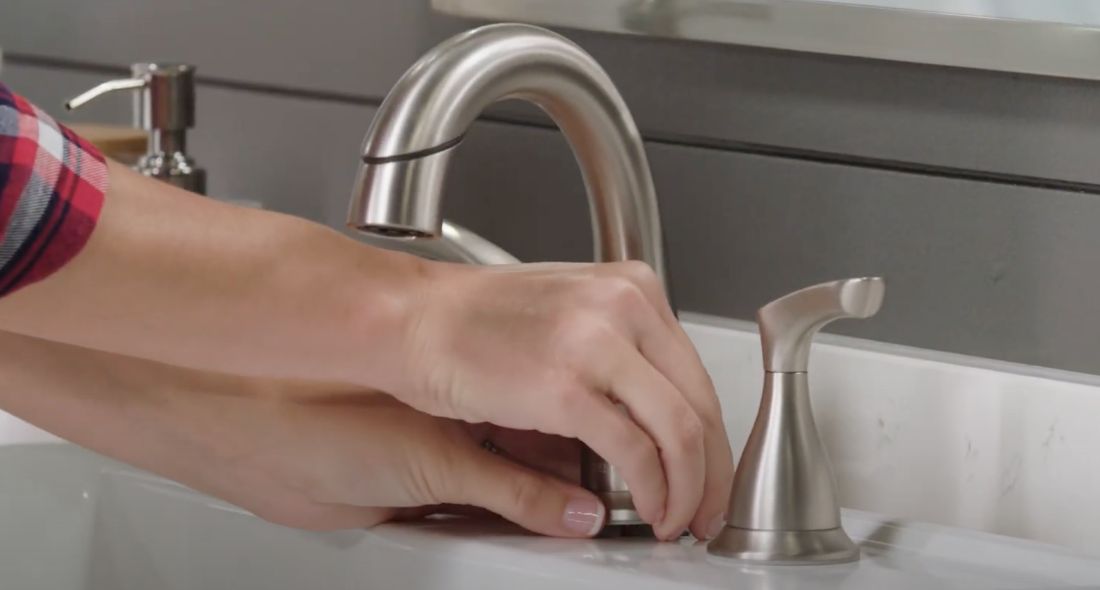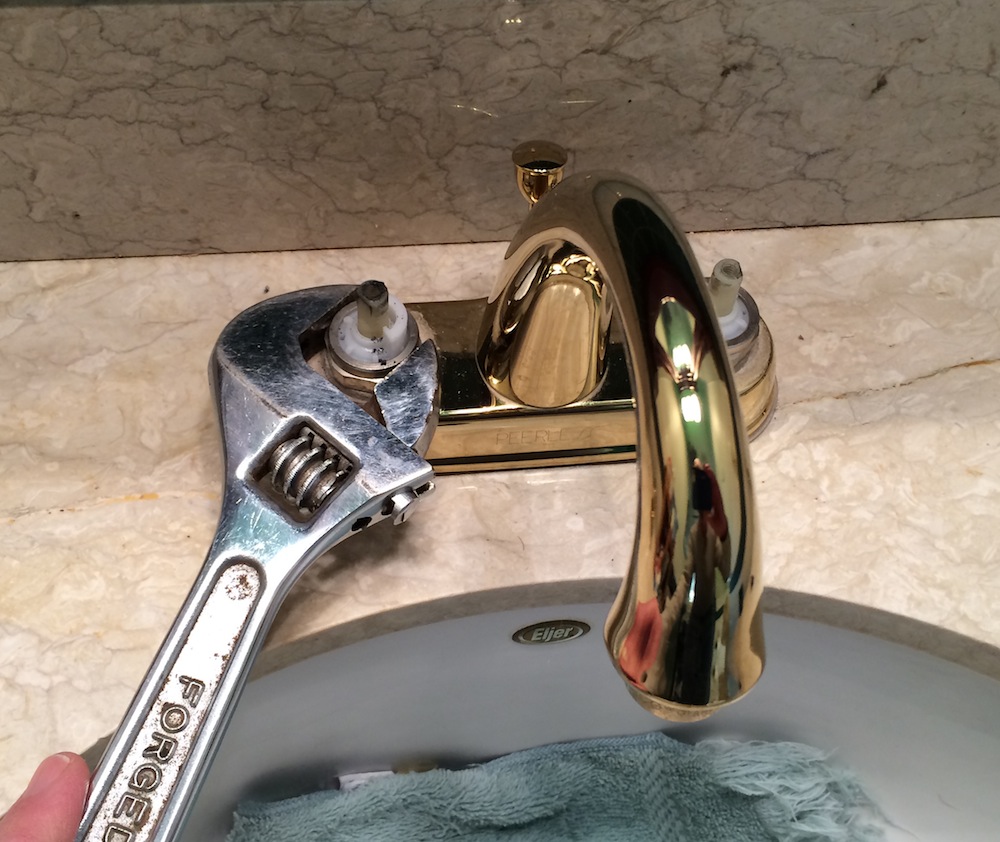Learning the Importance of Dealing with a Leaking Faucet
Learning the Importance of Dealing with a Leaking Faucet
Blog Article
Just how do you really feel when it comes to Leaky Faucets: Why They Happen & What to Do About Them?

Dripping taps may look like a minor trouble, but their influence exceeds just the nuisance of the noise. From drainage to sustaining unneeded financial prices and health threats, ignoring a trickling faucet can result in various effects. In this post, we'll look into why it's vital to address this usual home issue quickly and properly.
Wastage of Water
Ecological Impact
Trickling faucets add significantly to water wastage. According to the Environmental Protection Agency (EPA), a solitary tap leaking at one drip per second can waste greater than 3,000 gallons of water each year. This not just strains water resources yet additionally impacts ecological communities and wild animals depending on them.
Step-by-Step Overview to Dealing With a Dripping Tap
Devices Called for
Before attempting to take care of a trickling tap, gather the necessary tools, consisting of an adjustable wrench, screwdrivers, replacement components (such as washing machines or cartridges), and plumber's tape.
Common Faucet Issues and Their Solutions
Determine the kind of tap and the particular concern causing the drip. Typical issues consist of worn-out washers, rusty shutoff seats, or faulty O-rings. Refer to maker guidelines or on-line tutorials for step-by-step assistance on repair work.
Financial Expenses
Boosted Water Costs
Beyond the environmental impact, dripping faucets can inflate water bills substantially. The accumulated wastage over time translates into greater energy expenditures, which could have been avoided with timely fixings.
Possible Home Damage
Furthermore, prolonged trickling can bring about harm to fixtures and surfaces bordering the faucet. Water build-up can create staining, deterioration, and even architectural concerns if left unattended, leading to extra repair service expenses.
Wellness Concerns
Mold and Mildew Growth
The consistent existence of moisture from a leaking tap creates a suitable setting for mold and mildew and mildew growth. These fungis not only jeopardize interior air high quality but likewise position wellness threats, particularly for people with respiratory problems or allergies.
Waterborne Illness
Stationary water in trickling faucets can come to be a breeding ground for bacteria and other pathogens, enhancing the risk of waterborne diseases. Contaminants such as Legionella germs flourish in stationary water, possibly bring about major illnesses when ingested or breathed in.
DIY vs. Professional Fixing
Advantages and disadvantages of Do It Yourself Repair Service
While some may attempt to take care of a trickling tap themselves, do it yourself fixings feature their very own collection of challenges. Without appropriate understanding and devices, DIY attempts can intensify the issue or bring about insufficient fixings, prolonging the problem.
Benefits of Hiring a Professional Plumber
Hiring a professional plumber guarantees that the underlying cause of the dripping tap is attended to effectively. Plumbers possess the competence and tools to identify and fix tap issues effectively, conserving time and minimizing the risk of additional damages.
Ecological Duty
Individual Contribution to Conservation
Taking duty for repairing leaking taps aligns with wider initiatives towards water preservation and environmental sustainability. Every individual's actions jointly make a substantial impact on preserving valuable resources.
Lasting Living Practices
By focusing on timely fixings and taking on water-saving habits, individuals contribute to sustainable living practices that benefit both present and future generations.
Preventive Measures
Regular Upkeep Tips
To stop leaking faucets, perform regular upkeep such as cleaning up aerators, checking for leaks, and changing damaged parts promptly. In addition, think about installing water-saving gadgets or upgrading to extra effective components.
Value of Prompt Repair Works
Resolving leaking taps as quickly as they're noticed protects against additional water waste and potential damage, ultimately conserving both water and money in the future.
Impact on Residential Or Commercial Property Worth
Perception of Well-Maintained Building
Maintaining a home in good condition, consisting of addressing maintenance issues like trickling faucets, improves its perceived value and worth amongst potential purchasers or tenants.
Influence on Resale Value
Properties with well-maintained plumbing components, consisting of faucets, command higher resale worths in the realty market. Addressing trickling taps can contribute to a positive impression throughout residential property assessments and arrangements.
Verdict
Resolving a dripping faucet goes beyond plain convenience; it's a vital step towards saving water, decreasing economic costs, and safeguarding health and residential property. Whether through do it yourself fixings or expert help, acting to fix trickling taps is a small yet impactful way to promote accountable stewardship of resources and add to a healthier, a lot more lasting future.
How to Fix a Leaky Faucet: Step-by-Step Repair Guide
A leaky faucet may seem like a simple annoyance, but if it's not fixed promptly, that leak could cost hundreds to potentially thousands. From water damage to mold, mildew, and high water bills, even a tiny leak can be catastrophic if left unattended. Damage like this can even affect the overall value of your home, so it's important to take the right approach for leaky faucet repair. You may need the help of a plumber in some cases, but we've got a few tips you can try on how to fix a leaky faucet before calling the pros.
Four Faucet Types
When you're learning how to fix a leaky faucet, the first step is knowing what kind of faucet you're working with! There are four common types.
Cartridge Faucets
Cartridge faucets come in one- or two-handled varieties. In one-handled cartridge faucets, hot and cold water combines in a single cartridge. In the two-handled versions, hot and cold water are controlled separately and mixed in the faucet.
Ball Faucets
Ball faucets have a single lever you push up and down to adjust the pressure and rotate to change the temperature. A slotted metal ball controls the amount of water allowed into the spout.
Compression Washer Faucets
They're the oldest type of faucet, but they're still used in many homes — especially older ones. Compression faucets have two separate handles that, when turned, raise or lower the washer that seals a water valve. This valve stops water from flowing through the faucet when it is turned off.
Disc Faucets
Disc faucets rarely need to be repaired due to their maintenance-free design. The water flow is controlled by two discs — the upper one raises and lowers against a fixed lower disc, creating a watertight seal. If your disc faucet starts leaking, you may need to replace the seals or clean residue buildup from the inlets.
Fixing a Leaky Faucet
Step 1: Turn Off the Water
Whether you're learning how to fix a leaky bathtub faucet or how to fix a leaky kitchen faucet, always turn off the water supply to your working area when you're fixing a leak. The last thing you want is a flood added to your list of things to fix.
Look for the shutoff valves below your sink or around the tub and turn them clockwise to stop the water flow. If your faucet doesn't have shutoff valves, you may need to turn off the water for the whole house. Check to make sure it's off by turning the faucet on. If nothing comes out, you're ready to start the repair.
Step 2: Take Apart the Faucet
How you disassemble your faucet depends on the type of fixture you have. You can use a flathead screwdriver to remove the caps on top of the handle or handles for cartridge and compression faucets. Inside, you should see handle screws. Unscrew these with a screwdriver to remove the handle.
Disc- and ball-style faucets will typically have an inlet screw near the handle, and removing that will reveal the interior of the faucet.
Detach the Valve Stem
For cartridge- and compression-style faucets, you'll see the inner valve stem or cartridge once you remove the faucet handles. If you have a compression faucet, unscrew the brass valve stem. If you have a cartridge faucet, pull out the cartridge. If your cartridge has been in place for a while, it may require some tools or extra force to remove it due to mineral deposits.
Examine and Replace Parts
Once you've removed the parts, check them out to confirm what needs to be replaced. You may see corroded rubber washers, O-rings, stems, or cartridges. On a ball-style faucet, check the seats and springs for damage.
If you need to repair a leaky disc faucet, check the inlet and seals on the lower disc.
Once you determine what parts must be replaced, visit your local hardware store. Bring the damaged parts with you to ensure you can purchase the correct components to replace them.
Clean Valves and Faucet Cavity
If you've removed a stem or cartridge, you may notice mineral buildup in the faucet's threads. Use white vinegar to clean the valve seat by soaking it for a few minutes, then scrub it away with a soft toothbrush and rinse with warm water. You can also clean the interior of the faucet in the same way.
Reassemble the Faucet
Once your faucet is cleaned and the required parts have been replaced, it's time to reassemble it. Put the pieces back together and slowly turn the water supply back on. Doing this slowly is crucial because too much initial water pressure can damage the new hardware you've just installed.
https://homewarranty.firstam.com/blog/how-to-fix-leaky-faucet

I have been very inquisitive about How to Fix a Dripping or Leaky Faucet and I hope you enjoyed reading the blog post. Sharing is good. You won't know, you may be doing someone a favor. Thanks so much for going through it.
Report this page